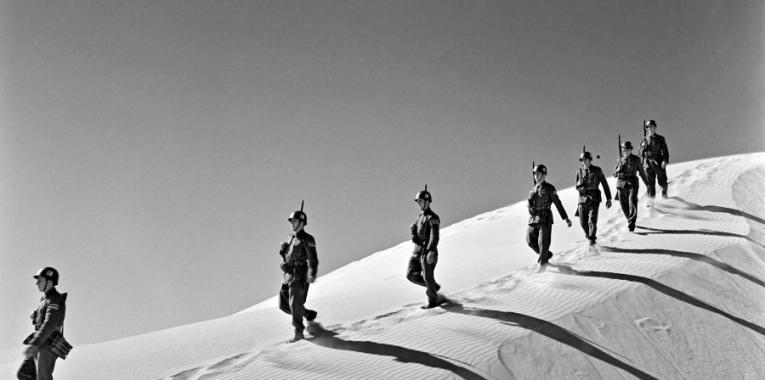The effectiveness of United Nations Peacekeeping (UNPK) has been debated over the course of its 70-year history. Peacekeepers have shown that they are resilient among crises and adaptable in the 21st century’s ever-changing landscape. This article explores the historical context of United Nations Peacekeeping, from its foundation to the contemporary era, specifically examining their mission’s establishments and breakthroughs and their respective influence in shaping the course of peacekeeping for the years to come.
The origins of peacekeeping is founded on the “prototype peacekeeping operations undertaken by the League of Nations” as a solution designed to ‘fill the void left by collective security.’ Due to the unique and distinct nature of peacekeeping, it was not accorded a “precise charter basis” within the UN. This article draws on the commonly-used definition that United Nations peacekeepers are “military personnel, but without enforcement powers, undertaken by the United Nations to help maintain or restore international peace and security in areas of conflict”. Although the nature of peacekeeping is continuously evolving, traditional peacekeeping contained three categories of tasks, namely “observation, interposition force and transition assistance with elements of humanitarian missions”.
United Nations Truce Supervision Organization in Palestine (UNTSO) and United Nations Military Observer Group in India and Pakistan (UNMOGIP) represented the first generation of peacekeeping as scaled-down observation missions. Although both missions represented significant efforts in peace observation, the establishment of the United Nations Emergency Force I (UNEF I) in 1956 became the fundamental and vital stepping stone of UNPK, presenting the fledgeling UNPK with a first opportunity to demonstrate that it had an important role to play in international conflicts.
Before UNEF I’s creation, UNPK was limited to small-scale observation missions, which suffered from constraints due to “limited functions, a small number of unarmed personnel”, thus rendering their overall contribution to peace efforts marginal. Between the lacklustre results of UNTSO and UNMOGIP alongside the Suez Crisis in 1956 and the escalating climate of the Cold War, the UN struggled to “pursue the collective security role envisaged for it”, and many highlighted the need for a new approach to peacekeeping. This led to the creation of the UNEF I, which “provided the impetus for the codification of UNPK approach for the next forty-five years”. Scholars also share such a perspective: Jacob Bercovitch argues that “various aspects of peace observation were combined with a new set of principles to form the new strategy of peacekeeping” contemporarily recognised as UNEF I. Indeed, the mission was created from “various aspects of peace observation…combined with a new set of principles to form the new strategy of peacekeeping.” The organizing principles of its conduct defined the “Holy Trinity” of traditional peacekeeping: “Consent of the parties, impartiality and the non-use of force, except in self-defence and defence of the mandate”.
UNEF I and the “Holy Trinity”
The first principle of consent mandates that UNPK deployment is conditional on the consent of the host authorities. Consent in UNPK ensured that a mission had “the political and physical freedom of action and support needed to carry out” tasks within its mandate. UNEF adhered to the principle of consent. This was clearly indicated in 1967 when it withdrew at the request of the Egyptian government.
The second principle, impartiality, has been regarded as “the oxygen of peacekeeping”, because its establishment guaranteed that the “only way peacekeepers can work is being trusted by both sides, being clear and transparent in their dealings and keeping lines of communication open.” In order to enforce this strict neutrality, “UNEF I troops did not include any force contributions from the major powers – and in particular, the five permanent members of the Security Council”, which eventually became a guiding principle for peacekeeping operations, establishing the strict “evenhanded and unbiased” conduct of peacekeeping personnel.
The third principle, non-use-of-force except in self-defence, established in UNEF I marked a move away from UNTSO and UNMOGIP, and stated that peacekeepers were able to carry weapons, unlike observers in previous missions. Although UNEF I was the first “fully-armed contingent”, the emphasis on the non-use of force solidified the UNPK third principle that peacekeepers were under firm restrictions in regards to the application of force.
UNEF I represented the first actual peacekeeping mission with roles beyond its past observation missions. As such, it is an important stepping stone for UNPK history, as its founding principles, the “Holy Trinity’‘, became the foundation of all future UN peacekeeping missions, nevermind its impact on the United Nations as a whole. The former Prime Minister of the United Kingdom, Anthony Eden, substantiates this conclusion, commenting in his memoirs that “the formation of [UNEF I] could be the turning point in the history of the United Nations”. UNEF I pioneered and established UNPK’s guiding principles and conduct. In other words, “it was a seminal operation for UN peacekeeping”. The firm commitment of UNPK to these principles reinforces its impact, “the UNEF I formula would be replicated by almost every subsequent peacekeeping operation during the Cold War and its model still influences some traditional missions in contemporary times”.
Although the nature of peacekeeping operations has greatly evolved and changed since the Cold War, it is “important to remember the almost revolutionary character of [UNEF I’s] innovation in 1956”. The “Holy Trinity” has stood the test of time and remains at the heart of UNPK’s strategic vision aligning “doctrine and practice” developed by UNEF I. In sum, UNEF I was to establish important standards for all future peace operations.
Justine Fung
Justine is a third year Politics student at King’s College London and a Working Group Member of the Defense & Diplomacy Policy Center at King’s Think Tank. Her main areas of interest are United Nations peacekeeping, intergovernmental strategic communications, campaign communications and political marketing.
The featured image (top) is entitled UN Emergency Force in the Sinai Peninsula and is from 1957. It is by United Nations Photos and is licensed under Attribution-NonCommercial-NoDerivs 2.0 Generic (CC BY-NC-ND 2.0).
Bibliography
Bellamy, J, A., Williams, D, P., & Griffin, S. (2010). Understanding Peacekeeping, 2nd Edition. Wiley. ISBN: 978-0-745-64185-0
Bercovitch, J., & Jackson, R. (2009). Conflict Resolution in the Twenty-first Century: Principles, Methods, and Approaches. ANN ARBOR: University of Michigan Press. Retrieved April 22, 2020, from www.jstor.org/stable/10.3998/mpub.106467
Diehl, P. (2015). First United Nations Emergency Force (UNEF I). The Oxford Handbook of United Nations Peacekeeping Operations. Oxford University Press.
Eden, A. (1960). Full Circle. The Memoirs of the Rt. Hon. Sir Anthony Eden. London: Cassell, 572-576. Retrieved November 6, 2020 from https://archive.org/details/fullcirclememoir00eden
Harsh, E. Peacekeeping in Today’s “Complex Emergencies”: Why it still matters that UN peacekeepers strove to adhere to the core principles of UN Peacekeeping. Responsibility to Student Journal, Volume 2, Issue no. 2. University of Leeds. Retrieved April 23, 2020 from http://r2pstudentjournal.leeds.ac.uk/issues/volume-2-issue-no-2/peacekeeping-in-todayscomplex-emergencies-why-it-still-matters-that-un-peacekeepers-strive-to-adhere-to-the-coreprinciples-of-un-peacekeeping/
Kenkel, Kai Michael. (2013). Five generations of peace operations: from the “thin blue line” to “painting a country blue”. Revista Brasileira de Política Internacional, 56(1), 122-143. Retrieved October 22, 2020, from https://doi.org/10.1590/S0034-73292013000100007
Nato. (1997). Chapter 5: Logistic Support for Peace Support Operations. Traditional Peacekeeping Missions. Nato Logistics Handbook. Retrieved April 22, 2020, from https://www.nato.int/docu/logi-en/1997/lo-503.htm
United Nations. (1990). The Blue Helmets: A Review of United Nations Peace-keeping, 2nd edn. United Nations: New York.
United Nations Department of Peacekeeping Operations. (2017). Lesson 1.3. Principles of United Nations Peacekeeping. Retrieved April 24, 2020, from http://repository.un.org/bitstream/handle/11176/400652/Lesson%201.3%20Principles%20of%20 United%20Nations%20Peacekeeping.pdf?sequence=3&isAllowed=y
United Nations Peacekeeping. Principles of Peacekeeping. Retrieved April 22, 2020 from https://peacekeeping.un.org/en/principles-of-peacekeeping

